Flag of Angola
- Flag Type: State
- Proportions (official): 2:3
- Official name: Republic of Angola
- Local name: República de Angola
- Sovereignty (year): YES (1975)
- Member of Organizations: UN, African Union
- Country code, territory: AO, AGO, 024
- Capital: Luanda
- Large cities: Huambo, Lobito, Benguela
- Population: ~38,700,000 (2024, UN)
- Religions: Christianity ~90%
- Area (km²): 1 246 700
- Highest point: Mount Moco (2,620 m)
- Lowest point: Atlantic Ocean (0 m)
- Currency: Angolan kwanza (AOA, Kz)
- Languages: Portuguese
- Dialing code: +244
- National domain: .ao
Flag Information
General information
Demography and Culture
Economy and communications
- All Flags
- Flags of Countries by Continent
-
Flags of Organizations
- Flags of UN countries
- Flags of the European Union countries
- Flags of NATO countries
- Flags of the countries of the Organization of Islamic Cooperation
- Flags of the countries of the Organization of American States
- Flags of the Arab League countries
- Flags of the African Union countries
- Flags of the countries of the Union of South American Nations
- Flags of the Commonwealth of Nations
- Flags of the countries of the Secretariat of the Pacific Community
- Flags of the Nordic Council countries
- Flags of the Caribbean Community
- Flags of the countries of the Association of Southeast Asian Nations
- Flags of the East African Community
- Flags of the countries of the Organization of Turkic States
- LGBT Community Flags
- Historical Flags
- Ethnic Flags
- Flags of the USA (states)
Description
The national flag of Angola is a powerful and evocative symbol, deeply interwoven with the nation's tumultuous struggle for independence, its revolutionary past, and its enduring aspirations for peace, progress, and social justice. Adopted on November 11, 1975, the very day Angola declared its independence from Portugal, the flag serves as a vivid historical document, reflecting the foundational ideology and the determined spirit that forged the modern Angolan state. Its design, steeped in both revolutionary symbolism and national pride, tells a compelling story of a people who fought fiercely for their freedom and continue to strive for a brighter future.
Design and Symbolism: A Revolutionary Emblem of Struggle and Progress
The flag of Angola features a distinctive and readily recognizable design: two horizontal bands of equal width, red above black, with a central emblem consisting of a yellow half gear, a yellow machete, and a yellow five-pointed star. Each color and element within this design carries profound symbolic weight, reflecting the core principles, historical struggles, and ideological underpinnings that have shaped the nation:
-
The Upper Red Band: Blood, Sacrifice, and the Fight for Freedom. The red upper horizontal band is a dominant and deeply significant element of the Angolan flag. It primarily symbolizes the blood shed by Angolans during the colonial oppression, the liberation struggle against Portuguese rule, and the defense of the country's sovereignty. This color serves as a poignant reminder of the immense sacrifices made by countless individuals who fought and died for the nation's freedom and self-determination. It evokes the revolutionary fervor, courage, and unwavering determination of the Angolan people to overcome adversity and achieve independence. The red also speaks to the spirit of revolutionary action and the commitment to social justice that defined the early years of the independent state.
-
The Lower Black Band: Africa, Dignity, and Resistance. The black lower horizontal band provides a stark contrast to the red and holds equally significant meaning. It primarily represents Africa, symbolizing the African continent and the black people who populate it. More specifically, it signifies dignity, pride, and the rich cultural heritage of the Angolan people. The black also stands for the oppression and suffering endured during centuries of colonial rule and the resolute resistance against that subjugation. It serves as a testament to the resilience of the Angolan nation in the face of adversity and its determination to forge a future rooted in self-respect and cultural affirmation.
-
The Central Emblem: A Synthesis of Labor, Revolution, and Socialism. The yellow central emblem is the most unique and ideologically charged component of the Angolan flag. It draws direct inspiration from the hammer and sickle, a powerful symbol of communist and socialist movements, yet it is adapted to reflect Angola's specific context and aspirations.
-
The Half Gear (Cogwheel): Industrial Labor and National Development. The yellow half gear, or cogwheel, represents industrial workers and production. It symbolizes the importance of labor, industry, and the ambition for national development and progress. It speaks to the nation's commitment to building a strong economy, modernizing its infrastructure, and improving the living standards of its people through industrialization and collective effort. The gear signifies the driving force of the working class in building the nation.
-
The Machete: Agricultural Labor, Armed Struggle, and Resistance. The yellow machete is a multifaceted symbol. It represents agricultural workers and peasants, highlighting the vital role of farming and rural communities in the Angolan economy and society. Crucially, the machete also symbolizes armed struggle and resistance, particularly the peasants' and farmers' role in the fight against colonial oppression. It evokes the spirit of self-defense and the determination to defend the land and the nation's resources. Together with the gear, it represents the union of intellectual and manual labor, as well as the alliance between workers and peasants.
-
The Five-Pointed Star: Socialism, Internationalism, and Progress. The yellow five-pointed star holds multiple layers of meaning. It primarily symbolizes socialism, internationalism, and progress. In the context of Angola's post-independence ideology, it represented the guiding principles of a socialist society, aiming for equality, justice, and collective well-being. The five points of the star are often interpreted to represent the five key principles of socialism: freedom, justice, democracy, solidarity, and progress. It also signifies the future and the nation's aspirations to achieve a brighter, more equitable society.
-
Collectively, the central emblem of the Angolan flag serves as a powerful icon of the nation's revolutionary ideals, its commitment to the working class and peasantry, and its path towards socialist development. While the political landscape has evolved since its adoption, the flag's symbolism remains a fundamental part of Angola's national identity, embodying its historical journey and its ongoing quest for prosperity and social harmony.
Dimensions and Proportions: A Standardized Representation of National Identity
The official dimensions and proportions of the Flag of Angola are meticulously defined to ensure its consistent and dignified appearance across all forms of display. The flag adheres to a widely recognized width-to-length ratio of 2:3. This specific ratio is a common standard for national flags globally, providing a balanced and aesthetically pleasing rectangular shape. The 2:3 proportion is favored for its versatility, allowing the flag to be easily scaled for various display purposes, from monumental installations to smaller, handheld flags, while maintaining its visual integrity and symbolic clarity.
The internal divisions of the flag, particularly the horizontal bands and the central emblem, also follow precise proportions to ensure visual balance and emphasis on its symbolic elements:
-
The two horizontal bands (red and black) are of equal height. This means each band occupies one-half (1/2) of the total height of the flag. This equality emphasizes the balance between the sacrifices made for freedom (red) and the African identity and dignity (black), suggesting that both aspects are equally foundational to the Angolan nation.
-
The central emblem, comprising the half gear, machete, and star, is centrally placed and scaled to be clearly visible and prominent. While specific dimensions for the emblem itself are not always explicitly stated in general descriptions, its size and positioning are crucial for its symbolic impact. It is typically designed to fit proportionally within the central axis of the flag, ensuring it does not appear too small or too large relative to the overall flag dimensions. The diameter of the imaginary circle within which the emblem is inscribed is usually defined in official specifications to ensure uniformity.
This detailed proportional design is crucial for upholding the flag's dignity and ensuring its accurate representation as a proud national emblem. The 2:3 ratio and the precise divisional proportions of the red and black elements, along with the centrally placed emblem, ensure that whether the flag flies majestically over government buildings, is displayed during international diplomatic events, unfurled at sporting competitions, or celebrated in national festivities, it consistently projects a strong, unified, and harmoniously balanced image. This adherence to precise dimensions is vital for conveying its message of struggle, labor, progress, and national unity to both its citizens and the world. The careful balance in design reflects the aspiration for a balanced and just society.
History and Evolution: Forged in the Crucible of Revolution
The history of Angola's national flag is inseparable from the nation's prolonged and often violent struggle for independence and its subsequent ideological journey. Adopted on a momentous day, the flag stands as a direct testament to the revolutionary forces that shaped modern Angola.
-
Colonial Period and the Rise of Nationalist Movements (Pre-1975): For centuries, Angola was a Portuguese colony, enduring a harsh and exploitative rule. In the mid-20th century, as decolonization swept across Africa, various nationalist movements emerged in Angola, seeking to end Portuguese domination. The three most prominent were:
-
MPLA (Movimento Popular de Libertação de Angola - Popular Movement for the Liberation of Angola): A left-leaning, Marxist-inspired movement.
-
FNLA (Frente Nacional de Libertação de Angola - National Front for the Liberation of Angola): Primarily an anti-colonial movement with a base in the north.
-
UNITA (União Nacional para a Independência Total de Angola - National Union for the Total Independence of Angola): Initially a Maoist-inspired movement, later anti-Soviet.
These movements had their own symbols, but no unified national flag existed under Portuguese rule.
-
-
The Road to Independence and the Flag's Inception (1974-1975): Following the Carnation Revolution in Portugal in April 1974, which overthrew the authoritarian Estado Novo regime, Portugal committed to decolonization. A transitional government was formed in Angola, involving the three main liberation movements. However, deep ideological and ethnic divisions soon led to intense fighting, escalating into a full-blown civil war even before independence was officially declared.
The design of the current Angolan flag is directly derived from the flag of the MPLA. The MPLA, as the dominant force in the liberation struggle and the de facto government in Luanda by late 1975, designed the flag to represent its revolutionary ideology and its vision for the newly independent nation. The red and black colors were already significant to the MPLA, symbolizing the struggle and the African people, respectively. The emblem of the gear, machete, and star was a clear nod to the socialist and communist symbols of workers, peasants, and revolutionary ideals, aligning with the MPLA's Marxist-Leninist orientation.
-
Adoption on Independence Day (November 11, 1975): The flag was officially adopted on November 11, 1975, the day Angola declared its independence from Portugal. The MPLA, with the support of Cuba and the Soviet Union, proclaimed the People's Republic of Angola and immediately hoisted this new national symbol. The timing of its adoption underscored its connection to the revolutionary triumph and the establishment of a new political order.
-
The Civil War Era (1975-2002): For nearly three decades following independence, Angola was embroiled in a devastating civil war between the MPLA government and UNITA, supported by the United States and South Africa. Throughout this period, the flag remained the symbol of the official government, even as the country faced immense internal strife and external interference. Its symbolism of struggle and workers' power remained relevant to the MPLA's rhetoric during this protracted conflict.
-
Post-Civil War and Democratic Transition (2002-Present): The civil war ended in 2002 with the death of UNITA leader Jonas Savimbi and a subsequent peace agreement. Angola then embarked on a path of national reconciliation and reconstruction. While the political system has evolved away from strict Marxist-Leninism, the flag's design has remained unchanged. There have been discussions and proposals to alter the flag, notably in 2003, with suggestions for a new design featuring a rock drawing (The Thinker) and a sun, intended to represent a more neutral and inclusive national identity, moving away from the overt political symbolism of the past. However, these proposals faced significant public and political opposition and were ultimately not adopted.
Thus, the Angolan flag continues to fly in its original form, a powerful and enduring symbol of its revolutionary birth, its resilience through decades of conflict, and its ongoing journey towards a unified and prosperous future. Its history is a testament to the nation's profound and often challenging evolution.
Regional Context and Southern African Identity: A Banner of Liberation and Resource Wealth
The flag of Angola occupies a unique and significant position within the vexillological landscape of Southern Africa, reflecting the region's complex history of liberation struggles, decolonization, and the ongoing pursuit of economic development. While distinct in its specific symbolism, the Angolan flag shares thematic resonance with many of its neighbors, particularly those that emerged from protracted armed conflicts against colonial or minority rule.
-
A Symbol of Armed Liberation: Angola's flag, with its explicit revolutionary symbols of the machete and gear, is a potent reminder of the armed struggle that characterized its path to independence. This resonates deeply with the experiences of many Southern African nations, such as Mozambique, Zimbabwe, Namibia, and South Africa, all of which endured significant armed conflicts to overthrow colonial or apartheid regimes. The Angolan flag thus stands as a banner of fierce determination and the willingness to fight for self-determination, a shared narrative across much of the region.
-
Resource-Rich Nations and Development Aspirations: Angola is richly endowed with natural resources, particularly oil and diamonds, which have profoundly shaped its economic and political trajectory. The yellow color in the flag, representing wealth, can be seen in a broader regional context where many Southern African nations possess significant mineral and natural resources. The cogwheel symbolizes industrial development and the aspiration to leverage these resources for national prosperity, a goal shared by many resource-rich countries in the region striving for economic diversification and industrialization beyond raw material extraction.
-
Post-Conflict Reconstruction and Reconciliation: Like many nations in Southern Africa, Angola experienced a protracted and devastating civil war post-independence. While its flag retains its original revolutionary design, the country's journey of post-conflict reconstruction and reconciliation is a common thread that binds it to neighbors like Mozambique and South Africa. The flag, despite its historical symbolism, now represents a nation striving for unity and peace after decades of internal strife, reflecting a regional trend towards stability and democratic consolidation.
-
Pan-African Solidarity (with a distinctive twist): While the Angolan flag doesn't use the traditional Pan-African colors (green, yellow, red) in the same arrangement as some West African nations, its black stripe directly signifies the African continent and its people, connecting it to a broader Pan-African identity. The revolutionary symbols, while specific to Angola's Marxist-Leninist past, also speak to a broader solidarity with anti-colonial and anti-imperialist movements across Africa. This distinguishes it from flags like South Africa's, which explicitly combines diverse elements, but still situates it within a shared regional narrative of self-liberation and self-affirmation.
-
Distinctive Ideological Legacy: The Angolan flag's overt socialist and communist symbolism (the gear, machete, and star) gives it a unique ideological character within Southern Africa. While countries like Mozambique also adopted socialist-inspired flags post-independence (with a similar AK-47 emblem), Angola's flag is particularly explicit in its representation of workers and peasants. This sets it apart from more generalized national symbols and highlights its specific historical trajectory influenced by Cold War geopolitics and internal ideological struggles.
In essence, the flag of Angola stands as a powerful symbol within Southern Africa, embodying a shared history of liberation struggle and the pursuit of national development through the leveraging of resources. Its unique design tells a specific Angolan story, yet it resonates with broader regional themes of resilience, resource wealth, and the complex journey of post-colonial nation-building.
Interesting Facts About The Flag of Angola:
-
Independence Day Adoption: The flag was officially adopted on November 11, 1975, the very day Angola declared its independence from Portugal. This makes it intrinsically linked to the birth of the modern Angolan state.
-
MPLA Origins: The design of the national flag is directly derived from the flag of the Popular Movement for the Liberation of Angola (MPLA), the dominant liberation movement and the party that came to power at independence.
-
Revolutionary Symbolism: The central emblem of the half gear, machete, and star is a clear nod to communist and socialist symbolism, representing the alliance of workers (gear) and peasants (machete) and the socialist direction of the nation (star). It's very similar to the hammer and sickle.
-
Controversial Design: Due to its strong revolutionary and socialist connotations, the flag has been a subject of debate. Some critics argue it represents a political party rather than the entire nation, particularly after the country moved away from strict Marxist-Leninist ideology.
-
Proposed Changes (Not Adopted): In 2003, there was a significant proposal to change the flag to a new design, featuring a sun in the center, inspired by a rock drawing known as "The Thinker" (O Pensador), and blue, white, and orange stripes. However, this proposal faced public and political opposition and was not adopted. The original flag remains.
-
Meaning of Colors:
-
Red (top): Symbolizes the blood shed by Angolans during colonial oppression, the liberation struggle, and the defense of the country.
-
Black (bottom): Represents the African continent, dignity, and the suffering endured during colonial rule.
-
-
Unique Emblem: The combination of the half gear and machete is unique among national flags, specifically representing industrial and agricultural workers, and their role in the armed struggle.
-
Symbol of Resilience: Despite decades of civil war and political shifts, the flag has remained unchanged since independence, serving as a powerful symbol of the nation's resilience and its enduring foundational principles.
-
No Coat of Arms: Unlike many other flags, the Angolan flag does not incorporate a traditional coat of arms. The central emblem serves a similar function as a national symbol.
-
Source of Pride: For many Angolans, particularly those who remember or whose families participated in the liberation struggle, the flag is a profound source of national pride, representing the hard-won independence and the aspirations for a better future.
Significance for the Inhabitants: A Banner of Hard-Won Freedom and Future Aspirations
For the people of Angola, their national flag is much more than a mere national emblem; it is a profound and deeply resonant symbol that embodies their nation's tumultuous history, the immense sacrifices made for independence, and their collective aspirations for peace, prosperity, and social justice. It serves as a constant visual reminder of their unique identity as Angolans and the core principles that continue to shape their national consciousness.
The upper red band speaks directly to the hearts of Angolans, symbolizing the blood shed and the immense sacrifices made during centuries of colonial oppression and the fierce struggle for liberation. For generations who lived through this period, or whose families bore witness to it, this red evokes a deep sense of gratitude, respect, and remembrance for the martyrs who paved the way for freedom. It instills a sense of national pride in their resilience and courage, reminding them that their independence was hard-won and should be cherished. This color unites them in a shared memory of struggle and triumph.
The lower black band represents Africa and the dignity of the Angolan people. It signifies their African identity, their rich cultural heritage, and the suffering endured under colonial rule. For Angolans, this black band is a testament to their strength, perseverance, and unwavering spirit in the face of adversity. It fosters a sense of unity and pride in their shared heritage, reminding them of their roots and their place within the broader African continent. It emphasizes the importance of self-respect and the assertion of their unique cultural identity.
The central yellow emblem, with its half gear, machete, and star, holds particular significance for the nation's people, reflecting the ideology that shaped the independent state. The gear and machete represent the workers and peasants, highlighting the foundational role of labor in building the nation. For ordinary Angolans, these symbols resonate with their daily lives, emphasizing the dignity of work and the collective effort required for national development. They evoke a sense of solidarity among different segments of society, underscoring the importance of unity in striving for progress. The star symbolizes progress, socialism, and internationalism, inspiring hope for a future of equality, justice, and collective well-being. Even as the country's political landscape has evolved, these symbols remind people of the initial aspirations for a more equitable society.
When the flag is proudly displayed—during national holidays like Independence Day, at schools, on government buildings, during sporting events, or in private homes—it invariably ignites a profound sense of patriotism, unity, and shared destiny among the Angolan people. Despite the long and devastating civil war that followed independence, the flag remained a constant, representing the enduring spirit of the nation. For the inhabitants, the flag is a living testament to their resilience, their ability to overcome immense challenges, and their collective aspiration for a future built on peace, prosperity, and national cohesion. It is a cherished emblem that unites them, reminding them of who they are and what they stand for as a free and sovereign nation, still striving to fulfill the promise of its revolutionary birth.
In the demonstration images, full-size flags are shown with proportions of 2:3, and hand-held flags with proportions of 1:2.
Donation
Download
Completely free for commercial and non-commercial use (public domain).
You can freely use them in your news magazines, websites, software, mobile applications.
We appreciate a backlink to https://flagssite.com
Raster files - Flag of Angola (PNG, JPG)
 Waving flag
Waving flag
- PNG format (transparent background), 72dpi, dimensions in Pixels (px), aspect ratio 3:4.
- 15х20 px
- 30х40 px
- 60х80 px
- 120x160 px
- 240x320 px
 Sizes:
Sizes:
"v15" - image size (by height); if necessary, replace with available: v15, v30, v60, v120, v240.
!!! For resizing, use the Latin (eng) keyboard layout.
<img src="https://flagssite.com/flags/v15/20402.png" alt="Flag of Angola">
 Round flag
Round flag
- PNG format (transparent background), 72dpi, dimensions in Pixels (px), aspect ratio 1:1.
"d15" - image size (diameter); if necessary, replace with available: d15, d30, d60, d120, d240.
!!! For resizing, use the Latin (eng) keyboard layout.
<img src="https://flagssite.com/flags/d15/20402.png" alt="Flag of Angola">
 Rectangular flag 2:3
Rectangular flag 2:3
- JPG format, 72dpi, dimensions in Pixels (px), aspect ratio 2:3.
"h30" - image size (by height); if necessary, replace with available: h15, h30, h60, h120, h240, h360, h480.
!!! For resizing, use the Latin (eng) keyboard layout.
<img src="https://flagssite.com/flags/h30/20402.jpg" alt="Flag of Angola">

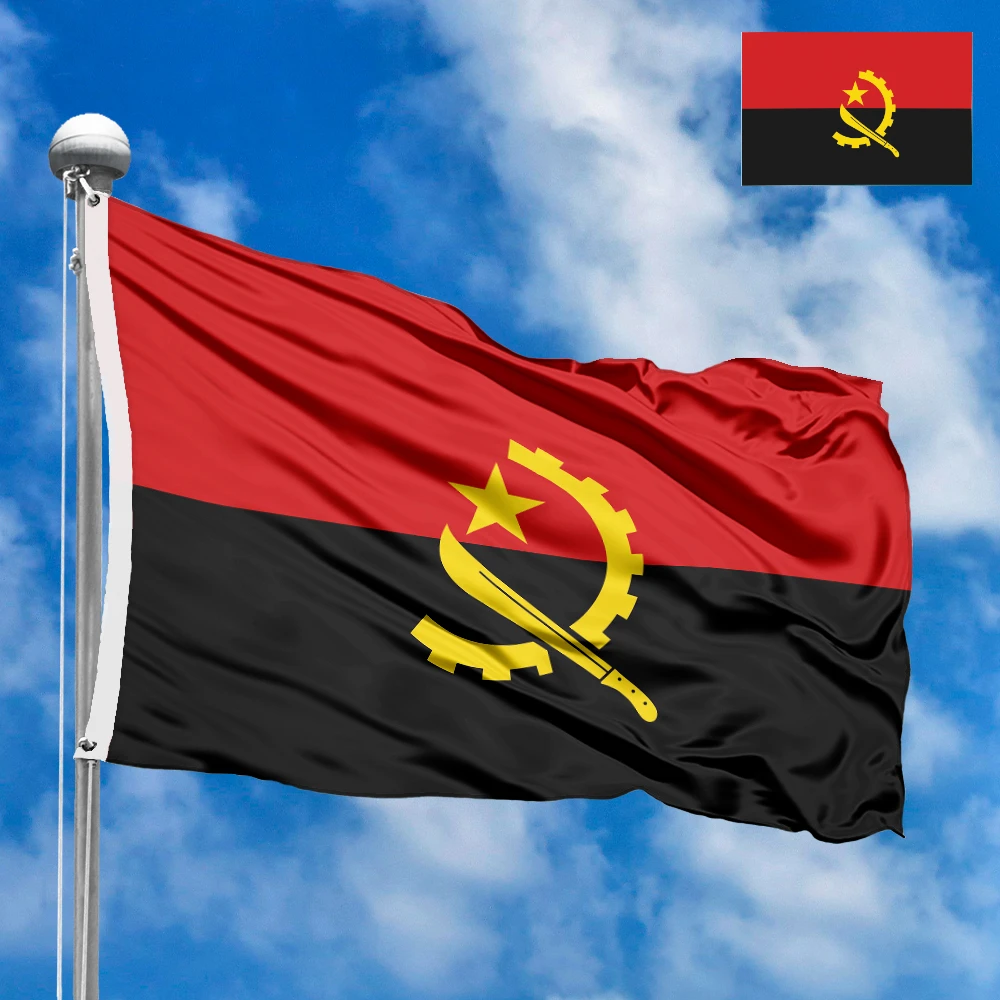
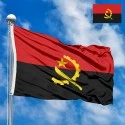
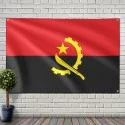
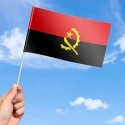
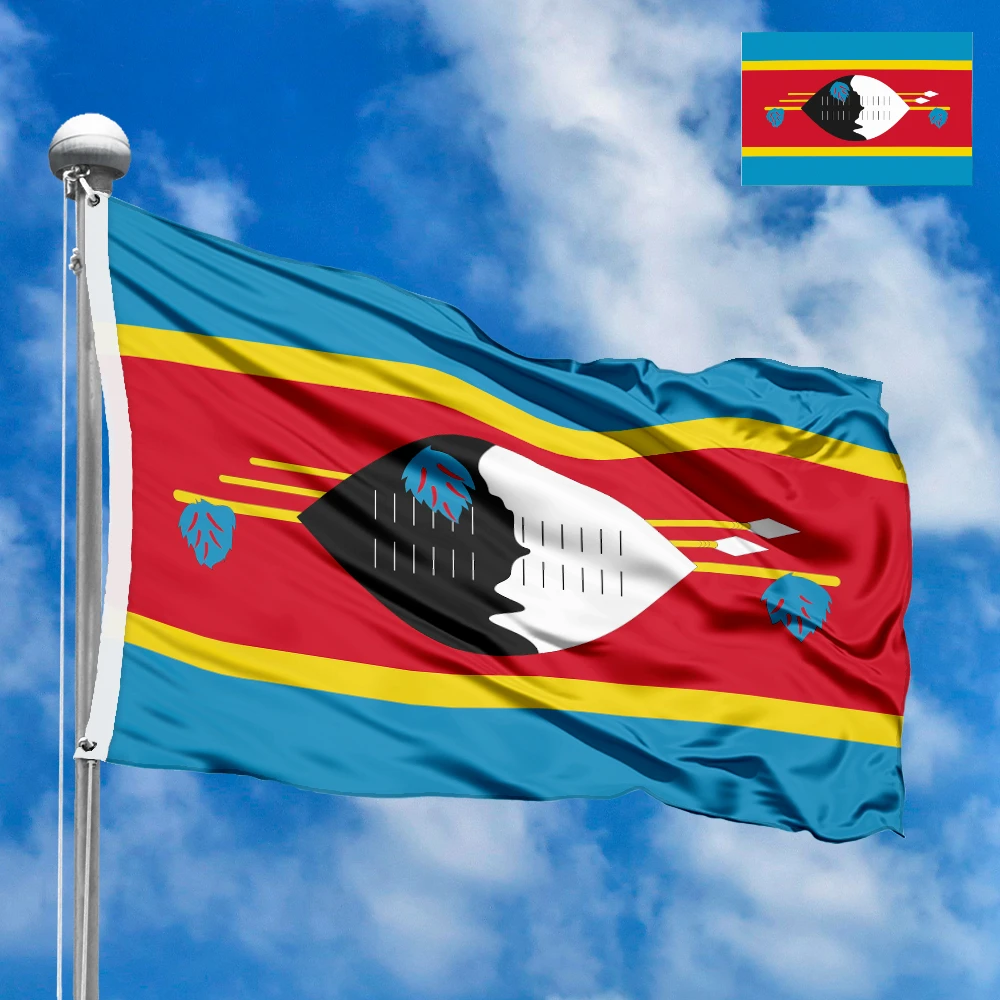

 Sizes:
Sizes:
 Sizes:
Sizes: